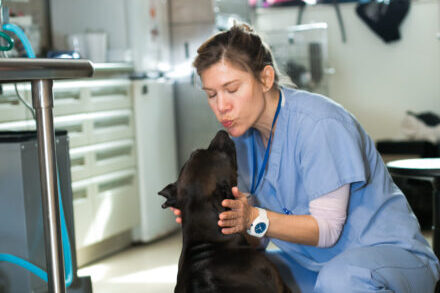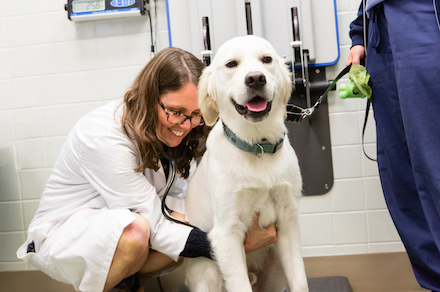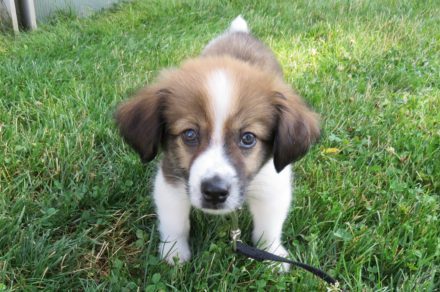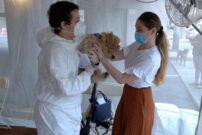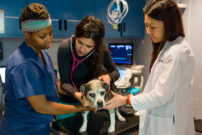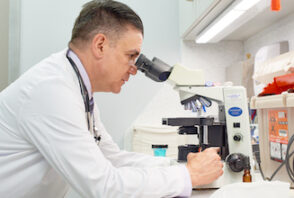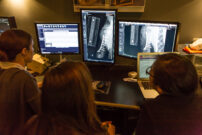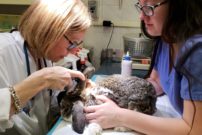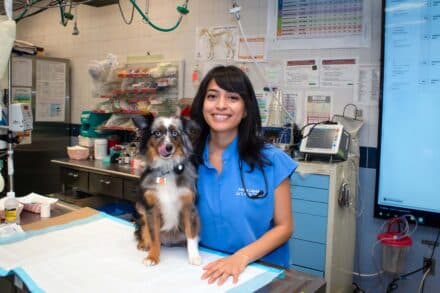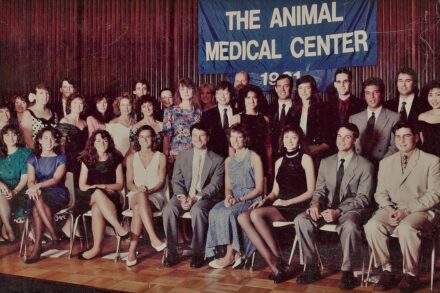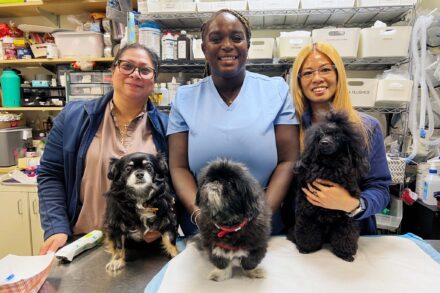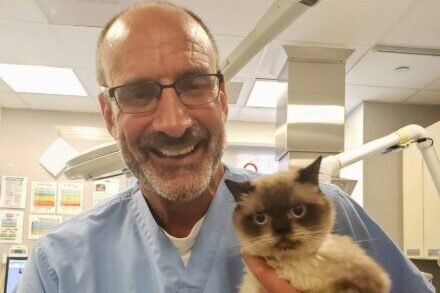Understanding Your Dog’s Microbiome: The Key to Better Health

Understanding Your Dog’s Microbiome: The Key to Better Health
If you watch television, you’ve likely seen advertisements promoting the health benefits of yogurt, sauerkraut, kimchi and kombucha. These foods contain probiotics—“good” bacteria and fungi with health-promoting properties. Just like humans, all living creatures have a resident population of bacteria and fungi called the microbiome, and I’ll discuss the microbiome of dogs in today’s blogpost.
Defining the Microbiome
The microbiome is the resident population of bacteria and fungi that live in or on your dogs’ body. It exists in several niches, which are various anatomic locations containing different populations of bacteria. These locations include the mouth, intestines, lungs, reproductive organs and skin.
A Healthy Canine Microbiome
The hallmark of a healthy microbiome is a wide diversity of organisms, without one dominant species. DNA analysis of healthy dog skin and ears identified on average 100-200 different bacterial and fungal species per dog. Some dogs had over 700 different species identified from their skin alone.
The Canine Microbiome in Disease
When the microbiome becomes abnormal, veterinarians call this dysbiosis. Dysbiosis occurs in many diseases, with diarrhea being the most commonly recognized. Another common disease associated with dysbiosis is a skin infection, where one bacteria—commonly a Staph—becomes the dominant organism. This results in an itchy, red, rashy dog.
Antibiotics can disrupt microbiomes. Dogs undergoing orthopedic surgery typically receive antibiotics as part of the preoperative protocol, and research shows this changes the intestinal microbiome for as long as two to three months after surgery.
Veterinary scientists hypothesize the brain and intestine communicate through what’s called the gut-brain axis. While this might sound like nonsense, dogs with seizures have a different intestinal microbiome than dogs without seizures, suggesting the microbiome may be involved in the neurological condition. What remains unknown is whether changing the microbiome can help correct the seizures.
Treating Dysbiosis in Dogs
To protect your dog’s microbiome, avoid unnecessary antibiotics since they are well known to provoke dysbiosis. Don’t ask for antibiotics when your veterinarian doesn’t recommend this treatment. While diet can influence the intestinal microbiome, intestinal disorders cause much larger changes in bacterial populations.
To combat intestinal microbiome disruptions, veterinarians use pre-, pro-, and post-biotics:
- Prebiotics promote growth of “good” bacteria by providing their preferred nutrients.
- Probiotics contain “good” bacteria.
- Synbiotics area combination of a pre- and pro-biotics.
- Postbiotics are the beneficial products produced by probiotics from prebiotics, including broken-down bacteria, enzymes, sugars, vitamins and fatty acids.
The concept of postbiotics is fairly new and less well-studied. For pet owners familiar with fiber-responsive diarrhea, the fibers we use for treatment are prebiotics. Probiotics are widely available in dog food as well as in supplement form. If your dog is prescribed antibiotics, concurrently administering probiotics can speed recovery of the intestinal microbiome.
The Bottom Line
You might be tempted to try a pre-, pro-, or post-biotic for your pampered pooch, but be sure to check with your veterinarian before starting any medication or supplement. Your veterinarian can help determine what’s best for your dog’s specific needs and health status.

